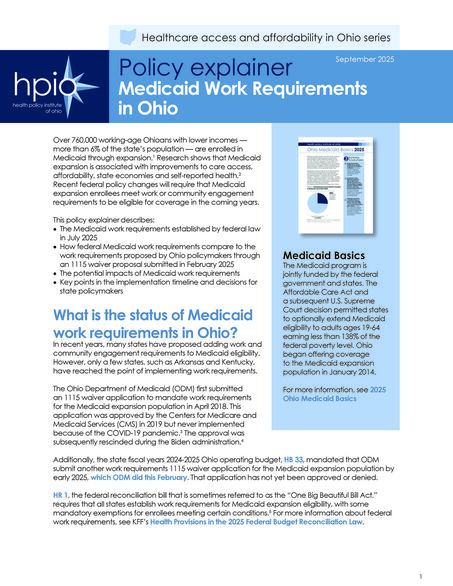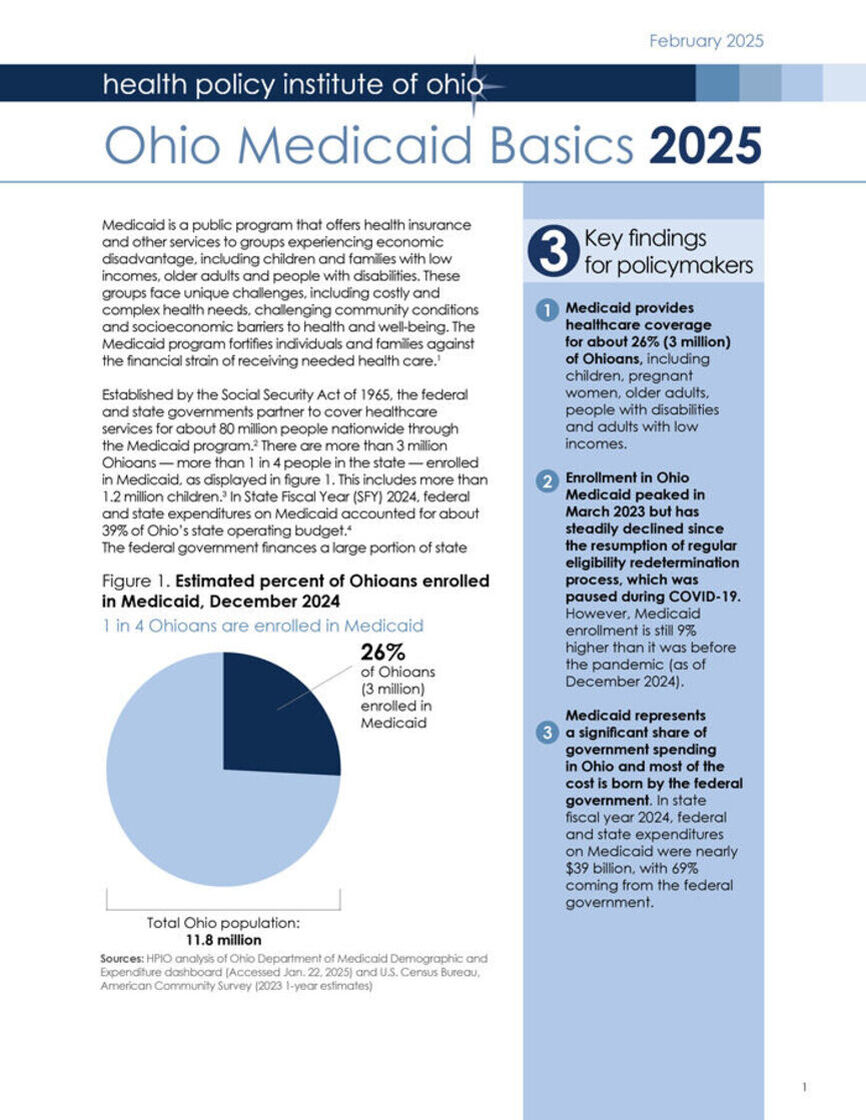Healthcare access and affordability in Ohio series
Medicaid Work Requirement in Ohio
This policy explainer details Medicaid work requirements recently established by federal law through HR 1, the federal reconciliation bill that is sometimes referred to as the “One Big Beautiful Bill Act,” and the work requirements proposed by Ohio policymakers through an 1115 waiver proposal submitted in February 2025.
Over 760,000 working-age Ohioans with lower incomes — more than 6% of the state’s population — are enrolled in Medicaid through expansion. Research shows that Medicaid expansion is associated with improvements to care access, affordability, state economies and self-reported health. Recent federal policy changes will require that Medicaid expansion enrollees meet work or community engagement requirements to be eligible for coverage in the coming years.
The publication describes the potential impacts of Medicaid work requirements and key points in the implementation timeline and decisions for state policymakers.
.
Medicaid Basics
The Medicaid program is jointly funded by the federal government and states. The Affordable Care Act and a subsequent U.S. Supreme Court decision permitted states to optionally extend Medicaid eligibility to adults ages 19-64 earning less than 138% of the federal poverty level. Ohio began offering coverage to the Medicaid expansion population in January 2014.
For more information, see 2025 Ohio Medicaid Basics
About HPIO's Healthcare access and affordability in Ohio series
This series of HPIO publications includes data and analysis about the current challenges facing working Ohioans and examines how recent federal and state policy changes will impact access to care and affordability in Ohio. Support for this project was provided by HPIO’s core funders.
By:
Amy Rohling McGee, MSW
Brian O’Rourke, PhD
Published On
September 26, 2025
 Download Publication
Download Publication

